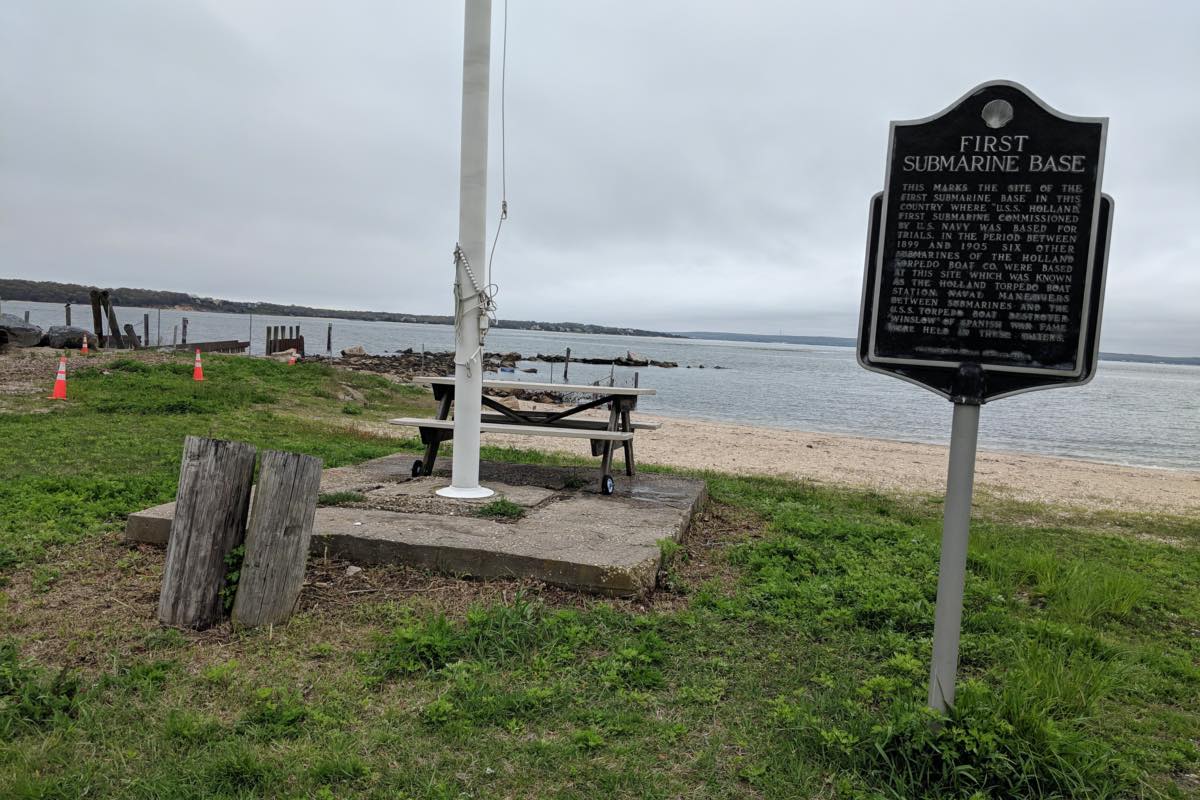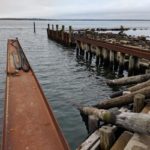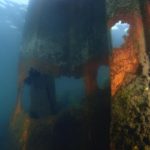New Suffolk is a sleepy little hamlet tucked into a corner of the North Fork of New York’s Long Island and situated on the shores of the Peconic Bay. Historic homes, a few restaurants, some small businesses and a boatyard define this quiet and unassuming community. But a little over a hundred years ago, this town became the epicenter of the development of a new class of military vessel: the submarine.
Words & Photos by Michael Salvarezza and Christopher P. Weaver
The history of military submarines in the United States dates all the way back to 1776, when a hand-powered egg-shaped device named the Turtle became the first submarine capable of independent underwater operation and movement, and the first to use screws for propulsion. But it would not be until 1900 that the United States Navy would commission their first submarine, the USS Holland (SS-1).
The submarine was named after John P. Holland, an early pioneer in the construction of submarines. Born in 1840 in Ireland, Holland had a vision for the construction of underwater vehicles and by the late 1800s he was actively testing different models with varying success.
Finally, after a number of design changes, Holland’s most successfully designed submarine, Holland, was built at former Navy Lieutenant Lewis Nixon’s Crescent Shipyard of Elizabeth, New Jersey for John Holland’s Holland Torpedo Boat Company, which was renamed the Electric Boat company in 1899.
The Holland made use of internal combustion engine power on the surface and electric battery power for submerged operations. Also included were many innovative features such as a conning tower from which the direction of the boat could be visually assisted and the submarine’s weapons aimed. She could take a crew of six men and could dive to a depth of 75 feet.
Testing of this unit began in the waters around New York City, but the need for secrecy combined with the busy boat traffic in this area created problems for Holland. So, in 1899, he began to look for a secluded location to test out his breakthrough design. He settled on New Suffolk because of its access to protected waters as well as its relative isolation. Here, he leased the Goldsmith and Tuthill Shipyards and the sea trials of his new machines began in earnest.
Tests and demonstrations at New Suffolk eventually convinced the U.S Government to purchase the Hollandfor the sum of $150,000 on 11 April 1900. She became the first submarine commissioned by the United States on October 12, 1900.
With the construction and testing of six additional submarines at this site between the years 1899 and 1905, the location in New Suffolk soon became an active submarine base, the very first in the United States.
The USS Holland was decommissioned in 1905, sold for scrap and later portions of it were put on display in Philadelphia, the Bronx, NY and finally Patterson, New Jersey. She was totally scrapped in 1932.
John Holland’s Electric Boat Company eventually became the Electric Boat Division of General Dynamics Corporation, with its base in Groton, Connecticut and has been the primary builder of submarines for the U.S. Navy for more than a century.
Today, the significant history of this tiny corner of water front real estate is almost lost to the passing of time. An historical marker on the site briefly documents the story of Holland’s submarine base and a few rusting rails and bulkheads are the only remains from this era.
Our dive to explore the underwater site of the first United States Submarine Base began on the shoreline adjacent to the decaying bulkhead. A protected cove, the entry is easy and not subject to significant wave action. We gradually descended in murky water and immediately came upon decaying timbers and rotted wood pilings, perhaps some of the last submerged vestiges of this time period.
Heading due east from the shoreline, we eventually cleared a small rock jetty that provides additional protection from the open water. Along the rocks, we found spider crabs, small fish and a few Peconic Bay Scallops watching us warily with their multiple eyes.
Once we rounded the jetty, we swam due north to the abandoned submarine launching pen. Here, as we explored the rusting remains of the bulkheads and pilings careful to avoid stirring up the muddy, silty bottom, our thoughts drifted back in time. What was it like to work on these early submarines? How exciting must it have been to launch these experimental and innovative machines alongside these very same bulkheads?
The age of innovation was in full swing, and the commissioning of the USS Holland, built and tested here at this very site, was the first in an unbroken string of submarines that continues to this day. We contemplated the significance of this as we further explored the submerged remains of the base.
The dive in New Suffolk at the site of John Holland’s submarine base did not reveal dramatic underwater terrain, or large numbers of artifacts, or great quantities of marine life. It was a murky dive in an otherwise nondescript location. But the cloudy water was an apt metaphor for historical significance of this site…as time passes, sites like these become lost to the developments of the future. At some point, this site will be converted to another purpose and Holland’s submarine base will disappear except from the pages of history books. We were glad to have explored it both above and below the water.
As we exited the water, we spotted an Osprey perched atop one of the pilings. His distinctive call to his mate bounced off the bulkhead walls of the old sub base, echoed over the waters of the Peconic Bay and back through time to a moment in history when this placid spot was the center of submarine development. As the Osprey resumed its hunt, we paused and we reflected on the rich history that lies all along our shores and under the waves of our familiar waterways.
Words & Photos by Michael Salvarezza and Christopher P. Weaver
- The bottom of the sub base varies from silty to muddy to rocky
- The sub base bulkhead is corroding slowly
- Submarines were launched here a century ago
- All that is left of the sub base are the rails and bulkheads
- Divers can explore the remains of the old sub base
- A historical marker commemorates the location of the old sub base
- The pilings around the sub base are overgrown with life
- A lush garden of sea weeds
- Peconic Bay Scallops have numerous photoreceptor eyes
- Divers can find Peconic Bay Scallops at the old sub base
- Look close in the pebbles to find small fish
- A Whelk makes its way along the bottom
- Periwinkle snails gather on the rocks
- The jumbled remains of pilings and assorted material
- An old wood piling lies on the bottom
- The rusting remains of the original bulkhead
- The original bulkhead is decaying over time
- Pilings serve as a hard surface for life to grow
- The history of this old sub base echoes through the years
- Author Christopher Weaver exploring the old sub base



























